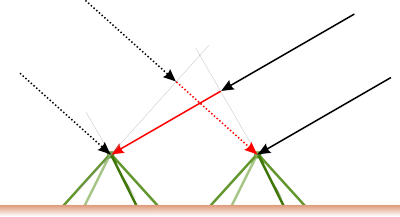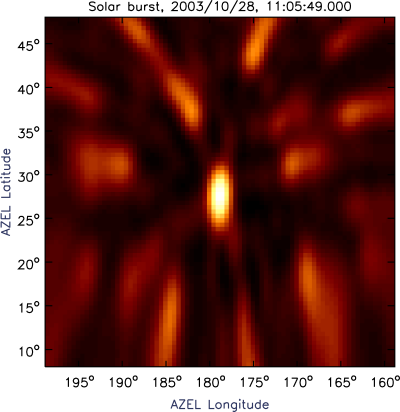Digital Beam Forming
In order to gain as much information as possible about a source with a telescope, there are two parameters that define the quality of an image. First of all, the collecting area should be as large as possible. For old-style telescopes, this means essentially: bigger is better. Secondly, the telescope diameter, or baseline, is also important. For a single-dish telescope, there is a one-to-one relation between these two.
It is also possible to combine data of several smaller telescopes. This yields a resolution as high as that of a single, enormous telescope with the same diameter as the distance between the smaller telescopes. In this way, even though the collecting area can be arbitrarily small, the same resolution can be obtained. The disadvantage, of course, is that a source must be observed longer to get the same signal-to-noise level.
Combining the signals from the different elements of the telescope array correctly, is a matter of exact timing. In the picture above, two telescopes are observing the same source. Because the left antenna is farther away than the right one, the signal the left one receives is delayed by a factor Δt compared to the signal of the right one. When adding up the signals, one should correct for this time delay, by adding the signal from the left antenna to the signal of Δt earlier from the right antenna:
Xl,r(t) = Xl(t) + Xr(t – Δt).
The same principle applies to an array of ‘simple’ telescopes like LOFAR or LOPES. The difference is in flexibility: by applying different shifts to the many antenna signals, you can point the telescope virtually anywhere, because the individual elements don't need to be pointed. One data set for a certain time period contains data of the entire sky.
Even though the creation of such all-sky maps is not the main goal of LOPES, it is still possible to generate them from cosmic ray event data sets, for example during a massive Solar burst. In the map below, the Sun is clearly visible as the bright spot in the center.


